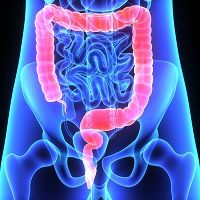Article
BMI Is Not a Reliable Indicator of Nutritional Status in Exocrine Pancreatic Insufficiency
Author(s):
New research in pigs indicates that exocrine pancreatic insufficiency may have unexpectedly large effects on the body composition of human children and that it alters hormone levels in ways that could lend themselves to new diagnostic tests.

New research in pigs indicates that exocrine pancreatic insufficiency may have unexpectedly large effects on the body composition of human children and that it alters hormone levels in ways that could lend themselves to new diagnostic tests.
Investigators in Germany ligated the pancreatic ducts of 8 piglets, provided enzyme supplements to 4 of them and compared the growth and development of those 2 study groups over the course of 11 weeks with the growth and development of 4 control piglets. (All ligated pigs, unlike the controls, did receive vitamin injections every 2 weeks to insure that the well-known effects of vitamin deficiency did not dominate the study results. Treatment of the 3 groups was otherwise the same.) The investigators euthanized all 12 piglets when they reached 19 weeks of age and performed a range of postmortem tests.
Food intake did not vary significantly among the 3 groups, either during the first 9 weeks of the study, when all the pigs got the same limited amount of food, or during the last 2 weeks of the study period, when they could eat all they wanted. However, as expected, the control pigs weighed the most at the end of the study period (79.7 kg ± a standard deviation of 5.03 kg), followed by the pigs who received vitamins and enzymes for pancreatic insufficiency (62.9 kg ± 3.03 kg), followed by the pigs who received only vitamins for pancreatic insufficiency (51.3 kg ± 4.36 kg).
The unexpected result came later, when autopsies showed that actual differences in bodyweight were significantly larger than the initial figures indicated. The investigators weighed the digestive tracts of each animal (complete with partially digested food) and found that they accounted, on average, for 8.2% of control pig body weight, 12% of enzyme-and-vitamin pig bodyweight and more than 20% of vitamin-only pig body weight.
“The data generated in this animal model study raises the question whether body mass index (or other body weight based parameters) is an adequate parameter, as an increased mass of gastrointestinal tract would result in an overestimation of body mass index especially in unsupplemented patients [with exocrine pancreatic insufficiency] but to a lesser extent also in [such] patients treated with enzymes,” the investigators wrote in Pancreatic Disorders & Therapy. “The finding that body mass index is inappropriate for quantifying nutritional status in cystic fibrosis patients was already published.”
Unfortunately, the study authors continued, there is no affordable and reliable tool for estimating the weight of gastrointestinal tracts in living subjects, so there is no direct way to account for undigested food when calculating body mass index.
The study did, however, suggest 1 indirect method for taking undigested food into account. Among the pigs they dissected, the effects of exocrine pancreatic insufficiency were strongly associated with changes in endocrine system hormones such as leptin and IGF-1, which can be reliably measured via common blood tests.
“The endocrine parameters leptin and IGF-1 also indicate massive changes in nutritional and endocrine status of the different groups,” wrote the study authors, who noted that piglet models have often provided valuable insights into human children. “Whether these parameters can be used as devices to evaluate nutritional status in patients [with exocrine pancreatic insufficiency] has remained unanswered up to now but this seems to be a promising option.”




